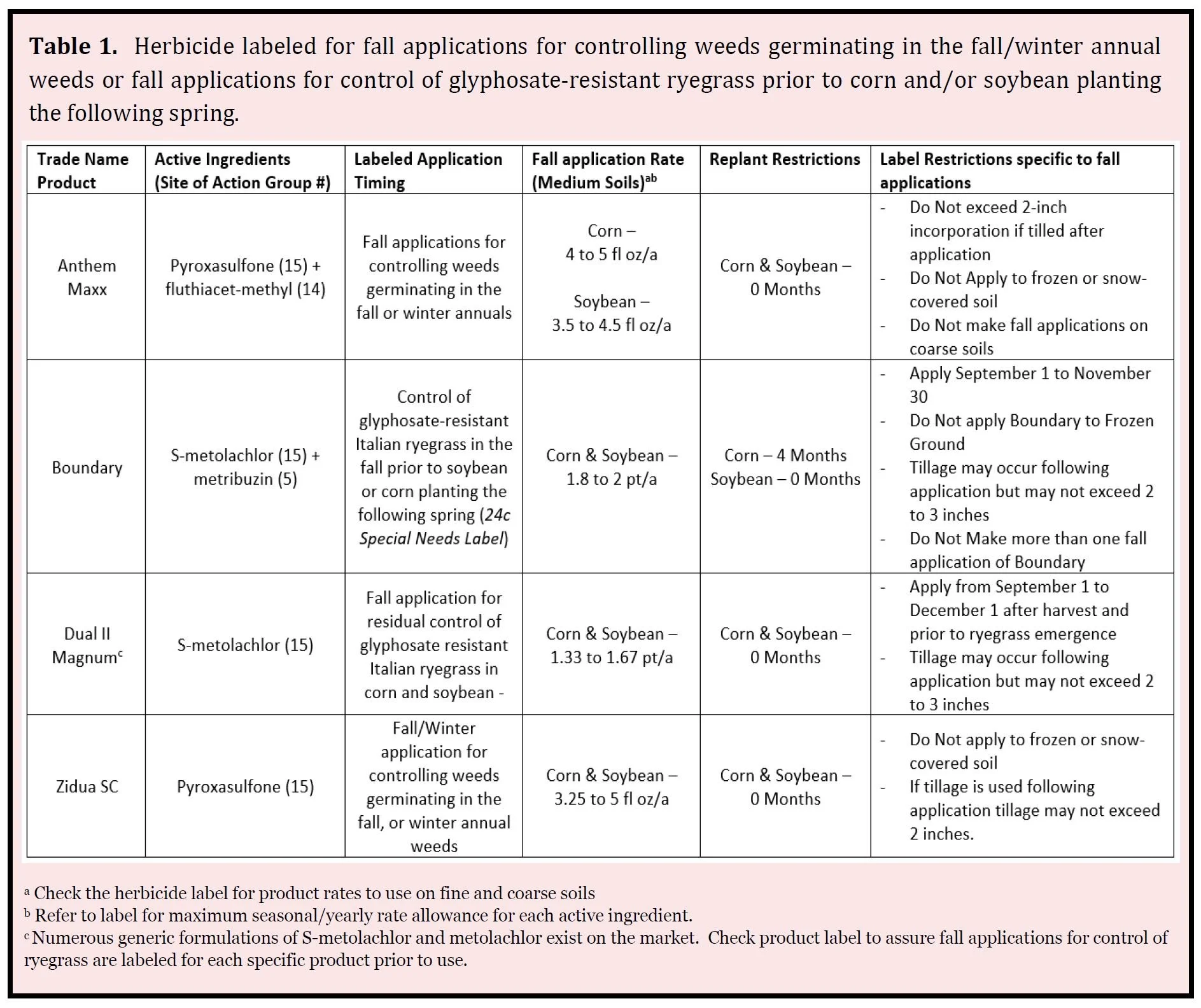Ryegrass Control Should Start in the Fall
Italian ryegrass escapes prior to corn and soybean planting in the spring have been on the rise over the past several years. During the 2022 spring season, we received significantly more calls and reports about ryegrass escaping spring burndowns than in previous years. A number of factors likely contributed to this increase in 2022 including increased ryegrass pressure across the state, herbicide shortages, and poor application conditions in the spring of 2022. While we certainly cannot predict the upcoming spring weather and can only estimate herbicide shortage effects, the one known factor is that ryegrass will continue to be present on Kentucky corn and soybean fields prior to planting. For those farmers who have been dealing with ryegrass and have known problematic fields, it may be pertinent to start planning for ryegrass control with a fall residual herbicide application.
Italian ryegrass is a winter annual that emerges in the fall and then matures and produces seed in the spring/early summer of the following year. Ryegrass has traditionally been a problematic weed primarily in wheat because of their similar lifecycle, but it is becoming more problematic in corn and soybean, especially with trends pushing to earlier planting dates in the spring. The lifecycle of ryegrass though may be an area that can be exploited on corn and soybean acres with the use of residual herbicides to control ryegrass as it emerges in the fall. There are several herbicides containing group 15 that are labeled for fall applications to control winter annual weeds such as Italian ryegrass. There has also recently been a 24(c) label approved in Kentucky specifically for control of glyphosate-resistant ryegrass.
The products that are either labeled for fall applications for control of fall emerging weeds, winter annuals, or fall applications specifically for glyphosate-resistant ryegrass control are listed in Table 1 along with the label details for each product. All products listed can be applied in the fall prior to corn or soybean planting.
When planning a fall application of a residual herbicide for control of emerging ryegrass, keep the following in mind.
Applications should occur following crop harvest and should ideally be prior to ryegrass emergence.
If ryegrass emergence has occurred at the time of application, an effective foliar herbicide will be needed to kill emerged ryegrass. Many labels suggest the use of Gramoxone (paraquat) for glyphosate-resistant ryegrass populations, although most Kentucky populations remain glyphosate susceptible and a rate of 1.25 to 1.5 lb ae glyphosate per acre will control small glyphosate-susceptible ryegrass.
One of the labeled herbicides contains metribuzin which can assist in controlling emerged ryegrass, although metribuzin alone should not be relied on for foliar control. Ideally, products containing metribuzin should be sprayed with paraquat to control ryegrass as the two actives are synergistic, whereas glyphosate and metribuzin can be antagonistic on ryegrass control.
Lastly, while a residual herbicide applied in the fall can help with ryegrass control, it should not be expected to completely control the ryegrass population in each field. Some ryegrass plants may emerge after the residual herbicide has degraded or may even emerge in the spring. Also, similar to all residual herbicide applications, rainfall is needed to fully activate the herbicide and in the absence of rainfall, ryegrass control will be minimal.
Even under the best of conditions, one should not expect a fall residual herbicide to completely control ryegrass and should plan accordingly for a spring burndown application. The use of a residual herbicide should be considered as a component of a larger ryegrass management program that reduces the number of plants needing to be controlled in the spring prior to corn and soybean planting. Additionally, the use of a fall residual lowers the potential of continuing to select for herbicide resistance with the addition of sites of action in the fall application.


